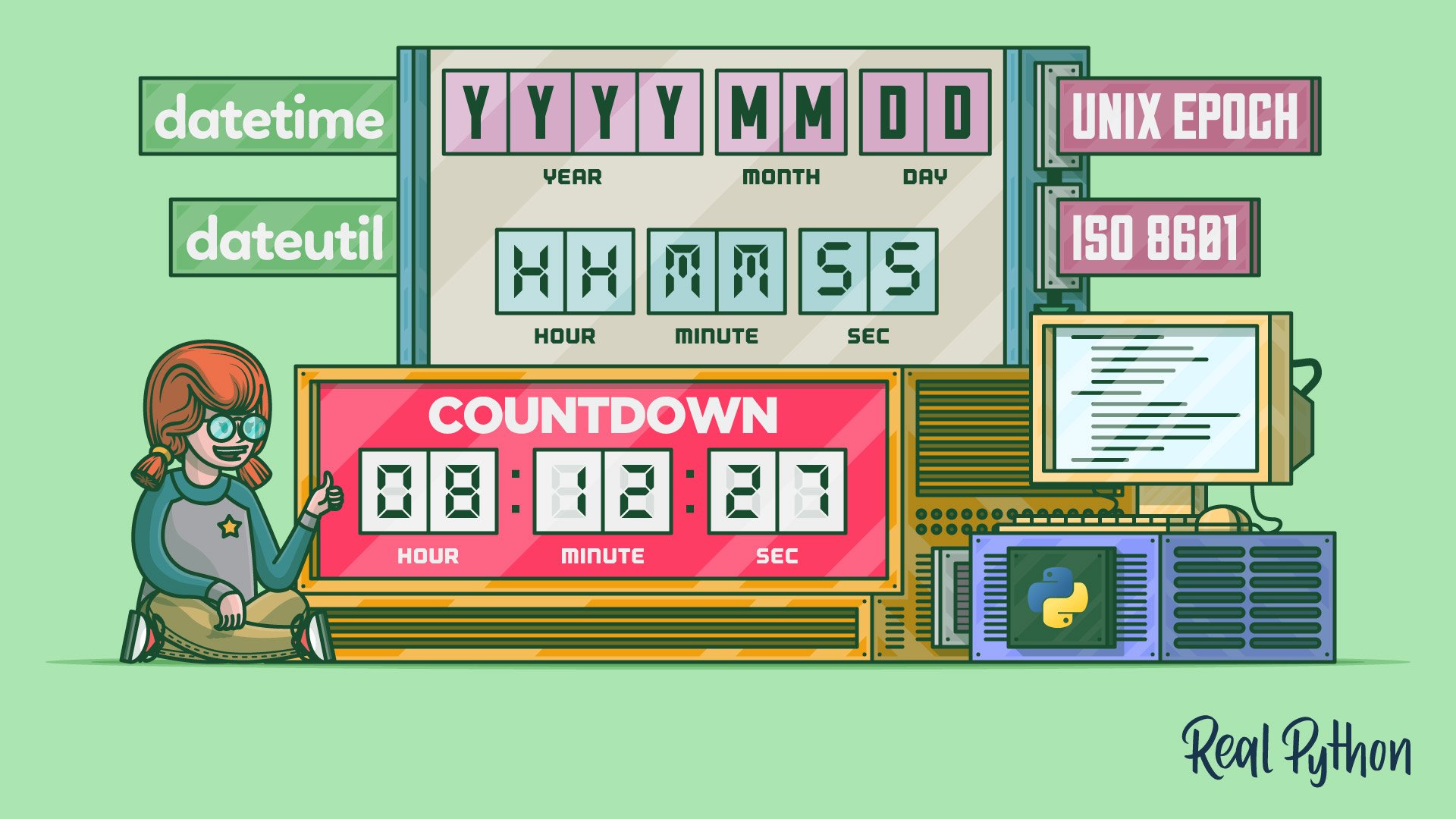
Improving Your PyCon Countdown
Improving Your PyCon Countdown 관련
Now that you know how to add time zone information to a Python datetime instance, you can improve your PyCon countdown code. Earlier, you used the standard datetime constructor to pass the year, month, day, and hour that PyCon will start. You can update your code to use the dateutil.parser module, which provides a more natural interface for creating datetime instances:
from dateutil import parser, tz
from datetime import datetime
PYCON_DATE = parser.parse("May 12, 2021 8:00 AM")
PYCON_DATE = PYCON_DATE.replace(tzinfo=tz.gettz("America/New_York"))
now = datetime.now(tz=tz.tzlocal())
countdown = PYCON_DATE - now
print(f"Countdown to PyCon US 2021: {countdown}")
In this code, you import parser and tz from dateutil and datetime from datetime. Next, you use parser.parse() to read the date of the next PyCon US from a string. This is much more readable than the plain datetime constructor.
parser.parse() returns a naive datetime instance, so you use .replace() to change the tzinfo to the America/New_York time zone. PyCon US 2021 will take place in Pittsburgh, Pennsylvania, which is in the US Eastern time zone. The canonical name for that time zone is America/New_York since New York City is the largest city in the time zone.
PYCON_DATE is an aware datetime instance with the time zone set to US Eastern time. Since May 12 is after daylight saving time takes effect, the time zone name is 'EDT', or 'Eastern Daylight Time'.
Next, you create now to represent the current instant of time and give it your local time zone. Last, you find the timedelta between PYCON_DATE and now and print the result. If you’re in a locale that does not adjust the clocks for daylight saving time, then you may see the number of hours remaining until PyCon change by an hour.